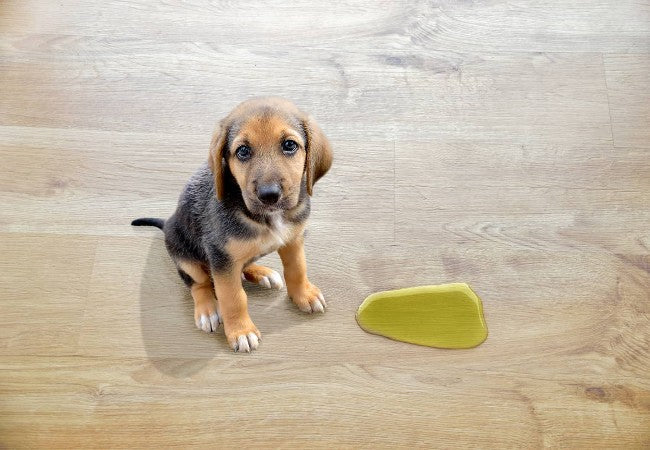Urine Crystals in Dogs 2025: Vet Fixes for Crystals, Stones & UTI Risk 🐶💧

In this article
Urine Crystals in Dogs 2025: Vet Fixes for Crystals, Stones & UTI Risk 🐶💧
By Dr. Duncan Houston BVSc
🔬 What Are Urine Crystals?
Urine crystals (or crystalluria) form when urine becomes supersaturated with minerals like struvite, calcium oxalate, urate, or cystine. They range from harmless to precursors for bladder stones or urinary blockage.
🟡 Common Types of Crystals
- Struvite (magnesium ammonium phosphate): Often linked to UTIs & alkaline urine; common and treatable.
- Calcium oxalate: Found in acidic/neutral urine; cannot dissolve via diet; may require surgery if stones form.
- Ammonium urate/urate crystals: Associated with liver conditions or purebred predisposition (e.g., Dalmatians).
- Cystine: Genetic; predisposes to xanthine or cystine stones.
- Xanthine: Rare; seen in dogs on high-purine diets or allopurinol therapy.
⚠️ Signs & When to See Your Vet
- Crystals are often found incidentally during routine check-ups.
- If stones form: signs include straining, pain, frequent urination, and blood in urine.
- Watch for urinary blockages—particularly in male dogs—that require immediate attention.
🔍 How Crystals Are Diagnosed
- Urinalysis: Microscopic examination to identify crystal type, urine pH, and concentration.
- Cultures: Used when struvite or UTIs are present—guides antibiotic selection.
- Imaging: X-rays or ultrasound detect stones and assess the urinary tract.
- Blood tests: Identify metabolic causes like liver disease or hypercalcemia.
🩹 Treatment Based on Crystal Type
Struvite
- Antibiotics for UTIs; acidifying/veterinary urinary diet to dissolve crystals in 8–12 weeks.
- Monitor urine during and post-treatment; some dogs need lifelong diet management.
Calcium Oxalate
- Cannot dissolve via diet; small stones might pass, larger ones require surgical removal.
- Prevention focuses on urine dilution, pH balance, and reduced dietary oxalate intake.
Urate & Ammonium Urate
- Diet low in purines, possible allopurinol; treat liver disorders if present.
- Surgical or lithotripsy options for stones.
Cystine & Xanthine
- Increase hydration; alkalinize urine; chelation (D-penicillamine, 2-MPG) may help dissolve crystals.
- Surgical removal if stones are present.
💧 Lifestyle & Dietary Prevention Tips
- Ensure fresh water is always available—dilute urine to prevent crystal formation.
- Consider prescription urinary diets with controlled mineral content and added salt to encourage hydration.
- Monitor urine pH and specific gravity at home with test strips or vet visits.
- For calcium oxalate prevention: avoid high-oxalate foods; supplement calcium to bind oxalate in the gut.
🔄 Long-Term Monitoring
- Repeat urinalysis and imaging as advised—especially after treatment.
- Dogs with recurrence-prone crystal types may need lifelong dietary and health monitoring.
🛠 Dr Houston’s Crystal Management Checklist
- ✔️ Identify crystal type via urinalysis and imaging
- ✔️ Treat infection, adjust diet or medicate to dissolve crystals
- ✔️ Support hydration and pH balance always
- ✔️ Remove stones surgically if needed
- ✔️ Recheck urine regularly, adjust plan based on recurrence
- 📱 Contact Ask A Vet for ongoing advice or concerns
🌟 Final Thoughts
Urine crystals may be a minor finding or a red flag for stones and UTIs. With accurate diagnosis, type-specific treatment, and long-term support through diet and hydration, most dogs do well. Persistent or recurring issues call for close monitoring—and vet or specialist consultation. 🐾❤️
Need help understanding your dog’s urine results, planning diet changes, or managing prevention long-term? Visit AskAVet.com or download the Ask A Vet app for tailored guidance anytime. 📱🐶






